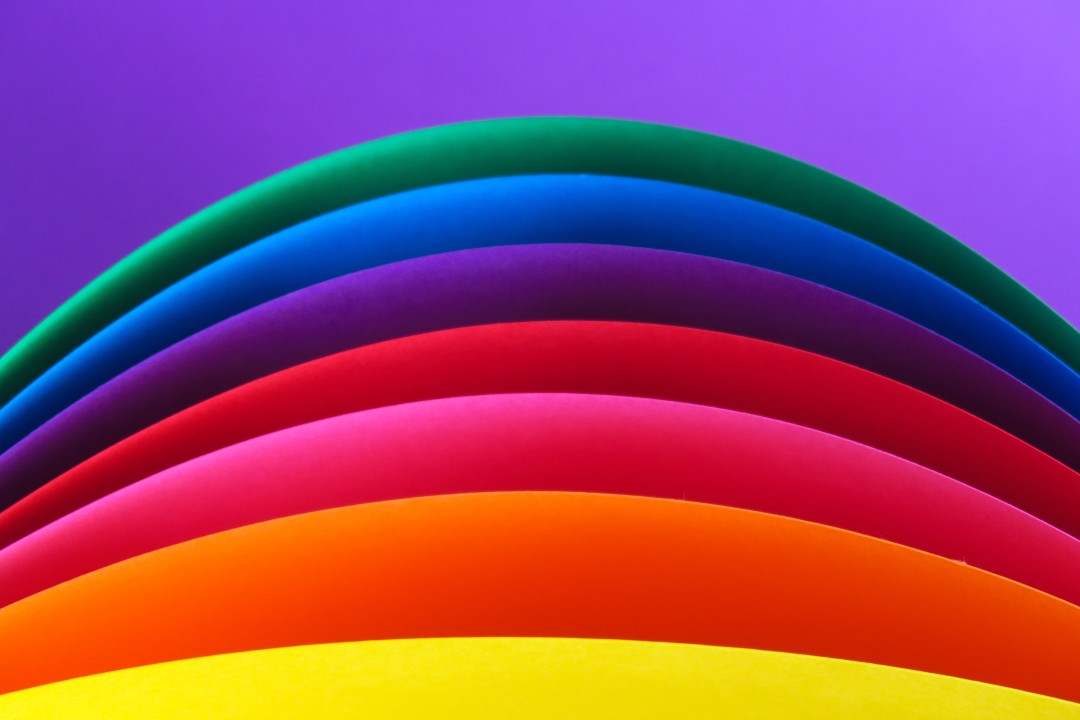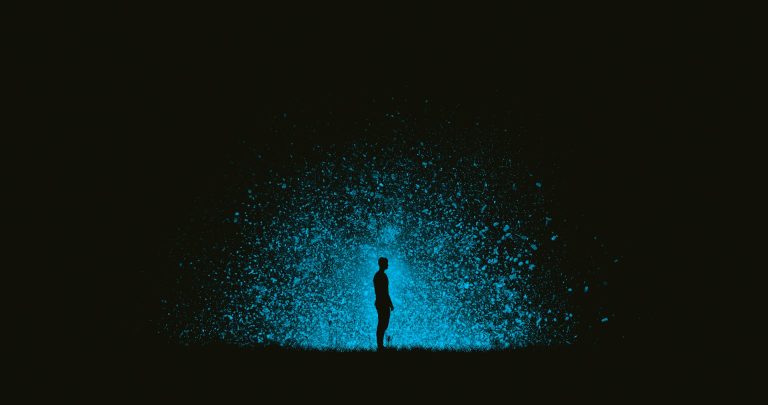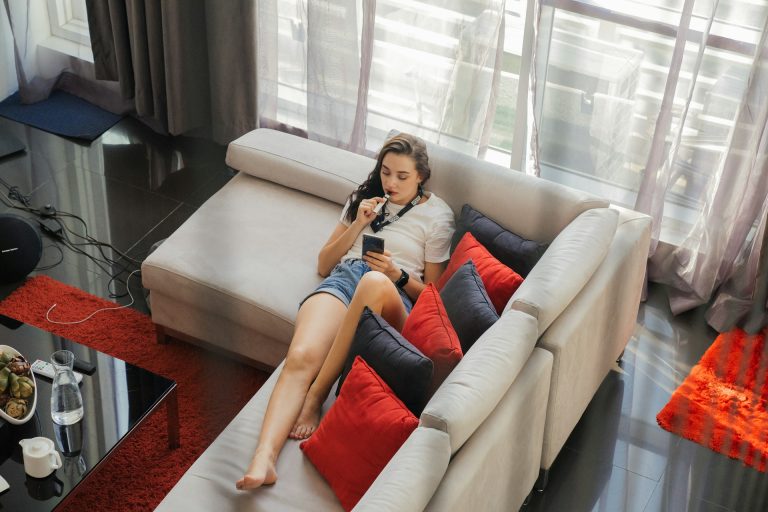People say that color red is the color of love. They also say that yellow radiates energy, white symbolizes purity and innocence, and color green often stands for envy.
It may sound unbelievable, but colors truly affect us and our feelings. Artists and interior designers share the belief that color can dramatically affect moods, emotions, and feelings. Pablo Picasso even said that “colors, like features, follow the changes of the emotions.”
Colors can be a powerful communication tool and can be used to signal action, influence mood, and even influence physiological reactions.
The psychology of color appeared for the first time back in 1666 when Sir Isaac Newton discovered that pure white light separates into all of the visible colors when it passes through a prism. Newton also discovered that each color is made up of a single wavelength and cannot be separated any further into other colors.
Further experiments demonstrated that light could be combined to form other colors. For example, when the red light was mixed with yellow light, an orange color was the result. Some colors, such as green and magenta, cancel each other out when mixed and result in white light.
You probably noticed this phenomenon if you have ever painted (and you must have, at least in school).
Our world is so vibrant and filled with colors and they may have a greater influence on you than you realize. Colors can change your mood and your behavior and even affect if you find a person attractive or not.
Despite the general lack of research in this area, the concept of color psychology has become a hot topic in marketing, art, design, and other areas.
Sounds interesting? If you want to learn more about how colors make you feel, then keep reading!
Table of Contents
Who would have thought that something as simple as colors could be such a powerful force in our lives and affect our mind and body? One problematic aspect of the psychology of colors is that every person has a subjective perception. However, each color has its own, universal meaning.
For example, colors in the red area of the color spectrum are known as warm colors and include red, orange, and yellow. It is said that these colors usually evoke emotions of warmth and comfort as well as hostility and anger.
On the other side of the spectrum, there are cool colors such as green, purple, and blue. Even though these colors are often said to create a feeling of calmness, they might also evoke feelings of indifference or sadness.
Keep reading to learn more about the feelings these colors evoke as well as the spiritual meaning of colors.
Black feels serious and sophisticated.
The color black is truly interesting. It is a truly powerful color, yet it is so often used as a symbol of evil. Also, black is used to represent treacherous characters such as witches or Dracula.
Many people dislike the color black since it is quite often associated with death, mourning, and unhappiness. Yet, when it comes to fashion, many people love it because of its slimming quality and the fact that it radiates formality and sophistication.
From the spiritual aspect, black is used to promote deep meditation. It also stands for authority, power, and mystery. When associated with a person’s aura, black signifies some sort of blockage or something being hidden. Interestingly enough, black is also associated with Yin – the feminine side of all things.
White makes you feel fresh, pure, and clean.
As we already mentioned, the perception of each color is subjective. For example, in Western cultures white is associated with weddings and angels. In addition, it conveys a feeling of peacefulness, cleanliness, and purity.
However, in Eastern cultures white is associated with death and sadness. This color is frequently used in mourning rituals and funerals.
However, in color psychology white stands for innocence or purity. While a bride wearing white was often thought to convey the bride’s virginity, blue was once a traditional color worn by brides to symbolize purity.
White can also convey the feelings of freshness, cleanliness, and simplicity. In addition, it can also symbolize a fresh start.
In terms of spirituality, white is associated with truth, healing and protection, and it also symbolizes the removal of pain and suffering.
When it comes to using white in architecture, designers frequently use this color to make rooms seem more spacious. Furthermore, people also describe color white as bland, cold, and sterile. Hospitals and hospital workers use white to create a sense of sterility.
Red makes you feel energized and passionate.
When people talk about how colors make you feel, they often use red as an example. This color is very interesting since it is intense and warm at the same time. Just think about it, red can be very aggressive but it can also evoke the feeling of love. In addition, this color is used to grab attention very frequently.
Red has many symbolic meanings and every individual reacts differently to the color. Some people see the color as exciting and energetic, while others say that red reminds them of power and strength. And, of course, red also symbolizes love and passion.
When it comes to the spiritual meaning of colors, red symbolizes energy, courage, creativity, and aggression. It also signifies materialism, a focus on sensual pleasures and a quick temper.
Blue makes you feel relaxed and safe.
Considered to be the opposite of red, the color blue is also quite interesting due to its various interpretations. We can find this color in nature often and many people describe this color as calm and serene. However, blue is also often seen as cold, icy, and even distant.
So many people say that their favorite color is blue. When asked why the most common answer is that this color evokes feelings of calmness and serenity. Blue is also frequently described as secure, tranquil, and peaceful. People also see blue as a sign of stability and reliability. Besides this, blue also tends to create feelings of sadness.
And, did you know that blue can affect your appetite? Many weight loss plans recommend eating food off a blue plate because this color is one of the least appetizing colors.
Blue is also the color of spirituality, inspiration, and inner peace. In spiritual healing, this color is used for calming. Besides being associated with depression and sadness, blue can also stand for spiritual development and contentment.
Green makes you feel refreshed and optimistic.
People tend to associate green with nature. This color usually brings to mind forests, trees, and the lush green of the grass. Green is often described as a tranquil color, mostly due to its heavy association with nature.
Green is said to have a calming effect, especially dark greens. At the same time, vibrant shades of green can cause a feeling of excitement. Sometimes, these shades can be motivating and inspiring.
In addition, people describe green as hopeful, optimistic, playful, and energized.
Spiritually, green is the color of healing and it is seen as very beneficial in spiritual healing. It can also symbolize a new beginning; think of a tiny green plant starting to grow in nature. The only negative side of the color green is that it is associated with envy.
Yellow makes you feel spontaneous and happy.
Yellow can be such a soothing and also a very aggressive color at the same time. People often describe this color as cheery and warm. But, this is also the most visible color, meaning that it is also the color that gets the most attention. Using this color in small amounts will grab people’s attention.
Due to the high amount of light that is reflected, yellow is the most fatiguing to our eyes. Using this color as a background can lead to eyestrain.
And, even though yellow is considered to be a cheerful color, it can also create feelings of frustration and anger. People in yellow rooms are more likely to lose their tempers and babies tend to cry more in yellow rooms.
When it comes to the spiritual meaning of colors, yellow symbolizes intellect, creativity, and happiness. In some cases, this color is also associated with cowardice. In terms of spiritual healing, yellow is said to promote clarity of thought.
Purple makes you feel creative.
Purple is most commonly associated with wealth and royalty. In ancient times, creating dye to color fabric required great effort and it was also very expensive. Purple is not commonly found in nature, so the resources needed to create a dye in this color were much harder to come by and much more expensive.
Alexander the Great and the kings of Egypt wore clothing colored in purple. Also, purple was the color of the tickets to Queen Elizabeth II’s coronation in 1953.
People also tend to associate purple with wisdom. Slightly mysterious in nature, this color is also frequently connected to the unknown, divine, and supernatural.
Pink makes you feel romantic and playful.
People tend to associate pink with feminine and girly things. Pink is a light red hue and perhaps that is the reason why people consider it is a symbol of love and romance. Pale pink shades are often described as relaxing, whereas vibrant pink shades are considered to be stimulating or aggravating in some cases.
Since pink is strongly associated with femininity, people associate the feelings of kindness, compassion, and nurturance with this color.
According to color psychology, people who are drawn to pink tend to have pleasant memories of the color, while those who don’t like it may have unpleasant associations with it.
Spiritually, pink stands for unconditional love, friendship, and conviviality. It is also seen as a symbol of balance between the spiritual and the material.
Phew, now that we covered how colors make you feel it is time to talk about how people use colors to their advantage. For example, did you know that color psychology in marketing is a thing and it is a very popular tool? Keep reading to find out more!
The psychology of color in marketing relates to persuasion, making it one of the most interesting and most controversial aspects of marketing.
Color evokes feelings and it also incites emotions. Colors make brands stand out from the crowd or blend into it. Colors can be used strategically to make the audience see what you want them to see.
Colors can be used by marketers to influence how people think and behave toward a brand. The choice of colors can affect the way people interpret information and also help them decide what is important.
A study was conducted in 2006 and, according to its results, the relationship between brands and color hinges on the perceived appropriateness of the color being used for the particular brand. Translated, this means simply… “does the color fit the product/service that is being sold..?”.
In addition, when it comes to choosing the right color, researches discovered that it is much more important to predict the consumers’ reaction to color appropriateness than the color itself.
The fact that colors influence how customers perceive the “personality” of the brand also implies that colors affect the purchasing intent. Almost every study on color psychology in marketing revealed that it is important that colors support the personality that the brand is supposed to portray instead of trying to align with stereotypical color associations.
For example, light blue often portrays a brand as honest, wholesome, original, but also cheerful and friendly. Vibrant pink shades make the brand seem cool, young, daring, unique and exciting. Light green will make people perceive the brand as secure, intelligent, hard-working, and corporate. Purple gives a brand a touch of femininity, charm, glamour, and sophistication. In marketing, darker shades of yellow are perceived as rugged, masculine, tough, and even a bit Western.
Even though the psychology of color in marketing has been analyzed for years, there is still much debate going on about the impact of colors on human psychology. One of the biggest reasons why this field is tricky is since there are many variables in place. Most importantly, different people perceive colors differently.
What about you? Have you ever been attracted by one brand more than another? And, now that you think about it, have colors ever affected your shopping decisions?
Final thoughts
As you have seen in this article, colors have such an important role. They can be used to create a certain mood, convey information, or even influence the decisions people make. Our color preferences influence the clothes we wear, how we decorate our surroundings, and even what do we choose to purchase. People tend to choose objects in colors that evoke certain feelings or moods. In addition, the color of your room can also put you in a specific mood. For example, many people paint their bedrooms a soft green to create a sense of peace and serenity.
So, what would be the bottom line? There has been a lot of research on the topic of how colors make you feel. The results show that colors truly do influence our emotions and moods, but their effects are subject to situational, cultural, and personal factors. In general, more research needs to be done to get some definite results.
However, we would love to hear from you! Feel free to share with us your favorite color and how it makes you feel!









